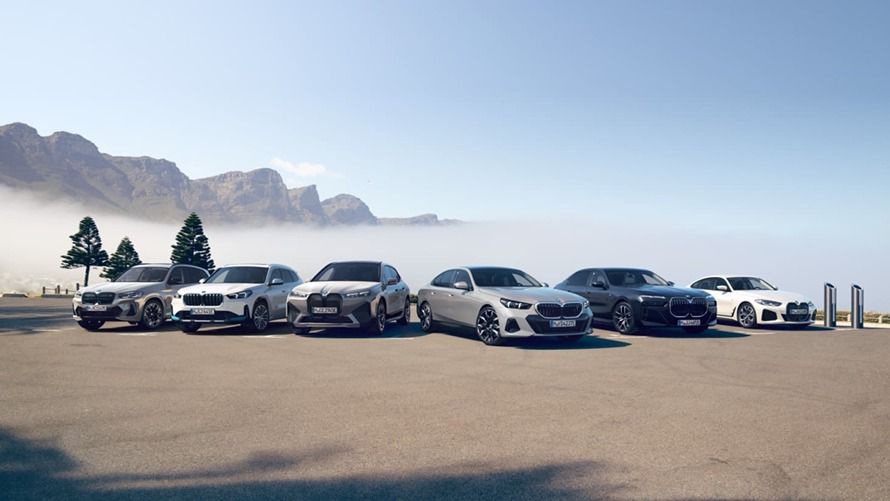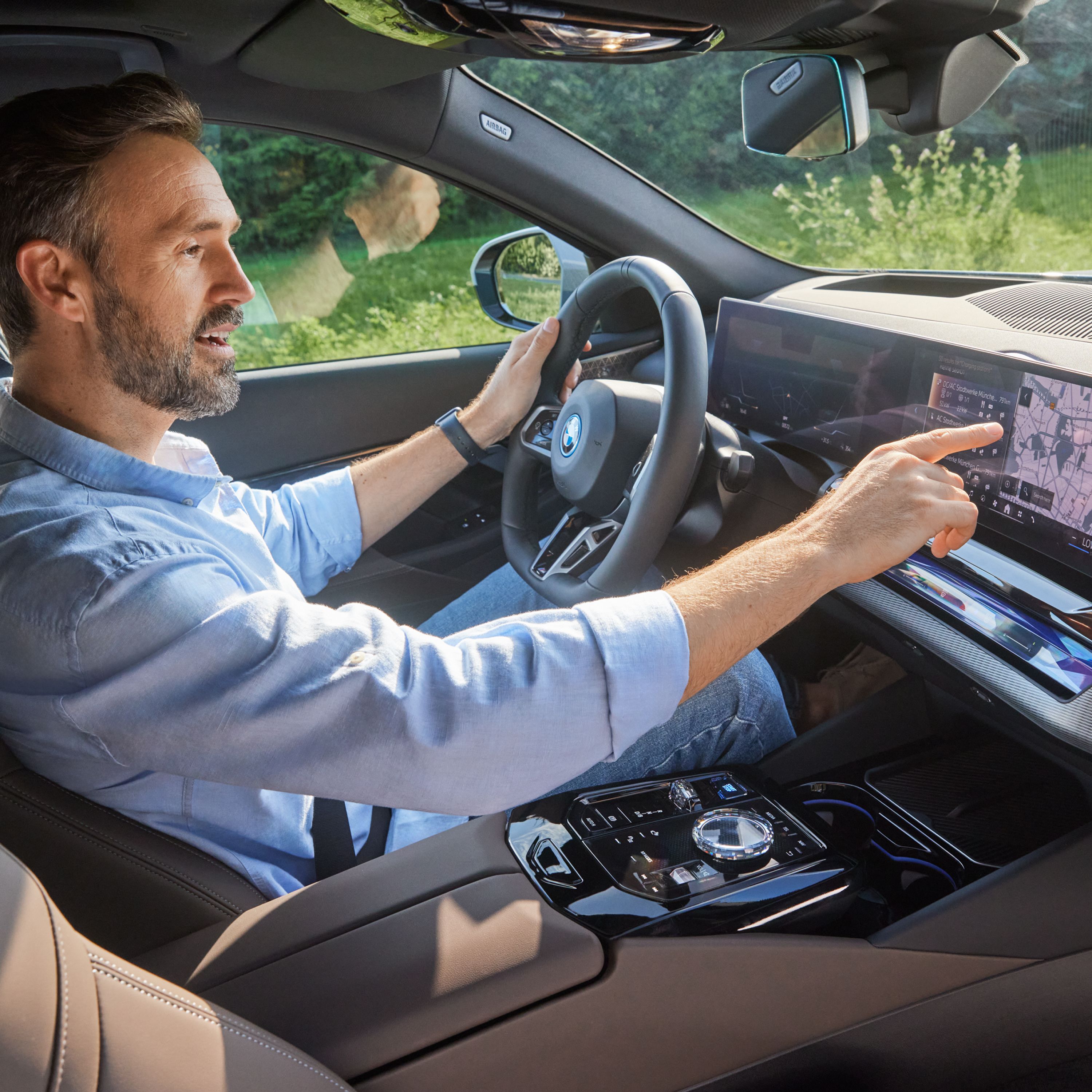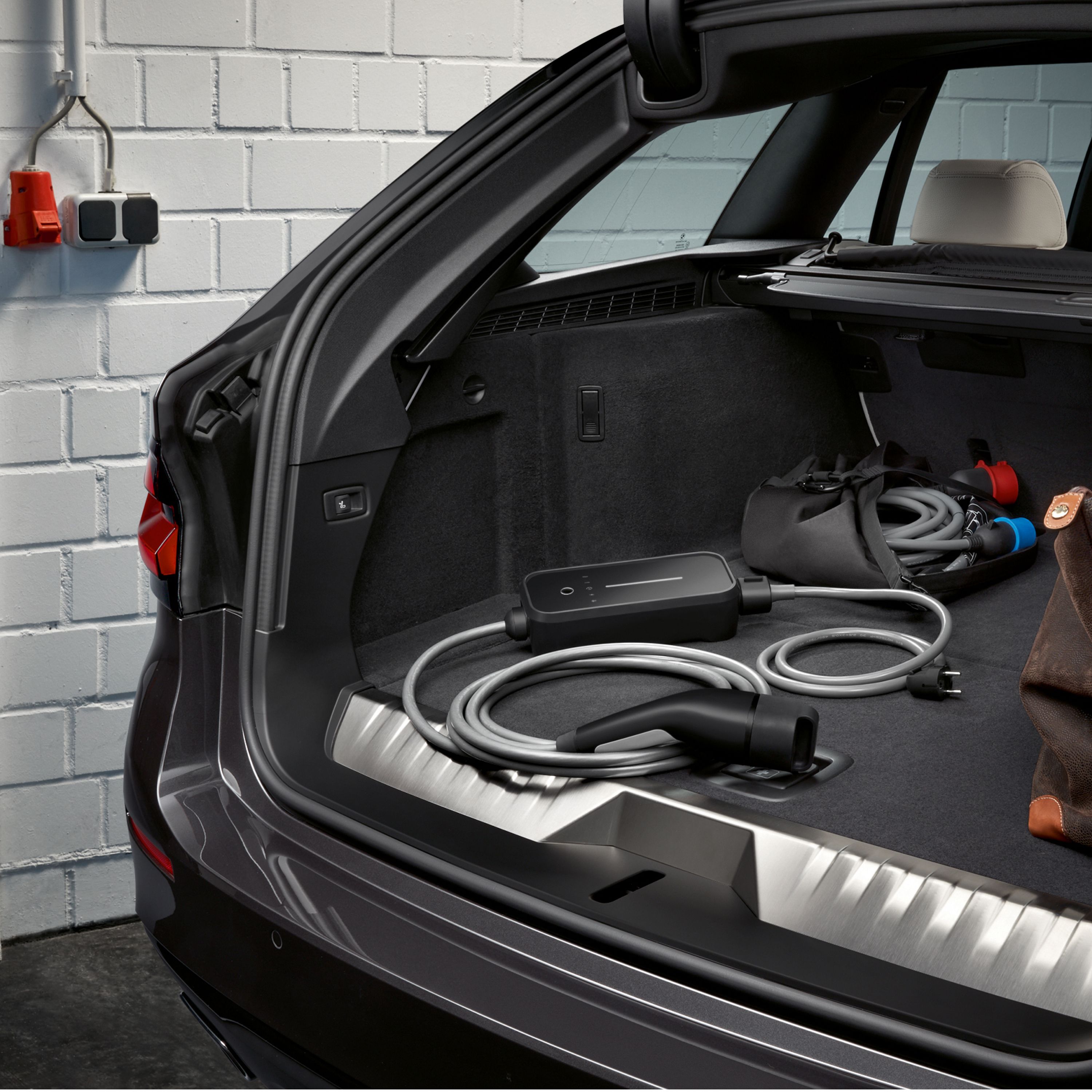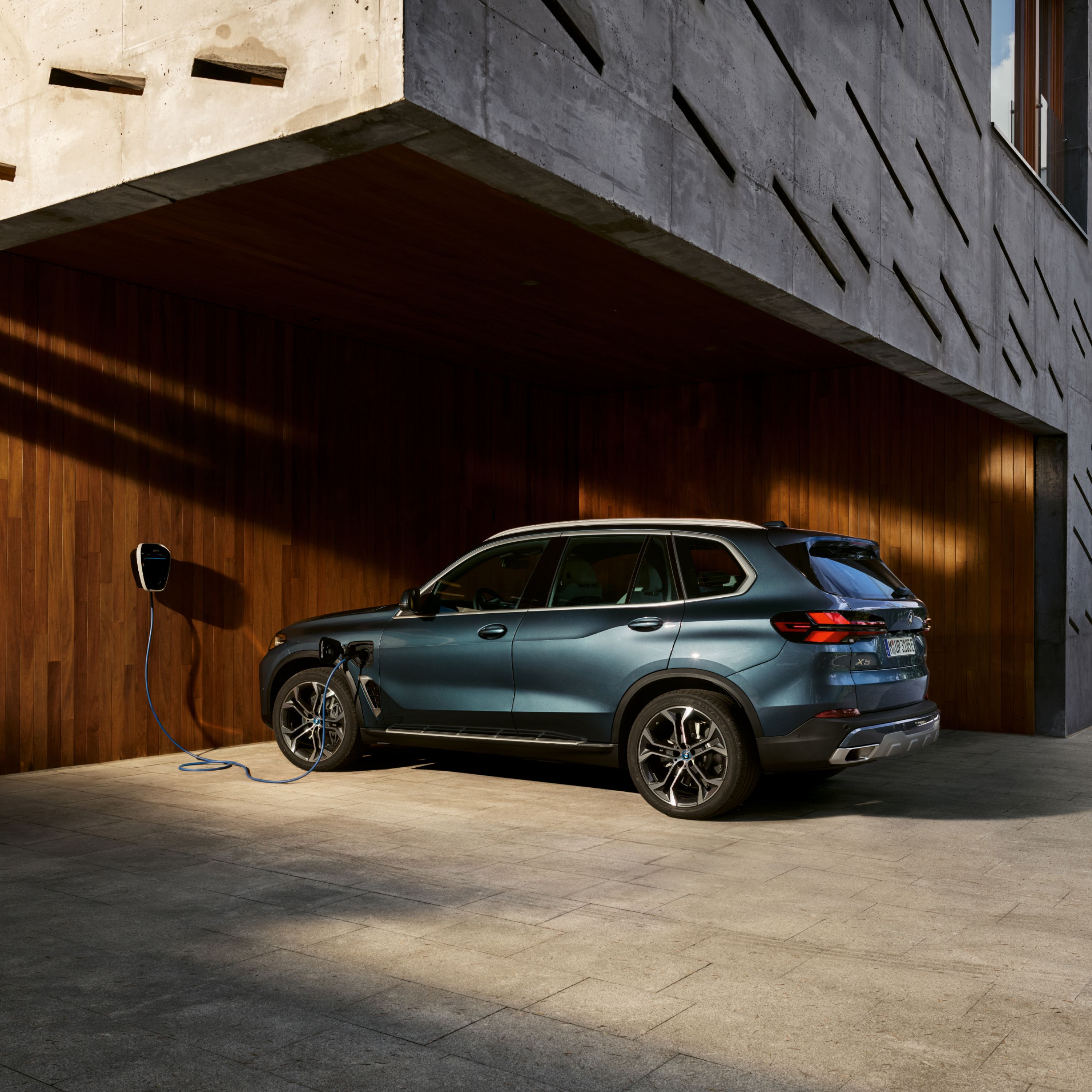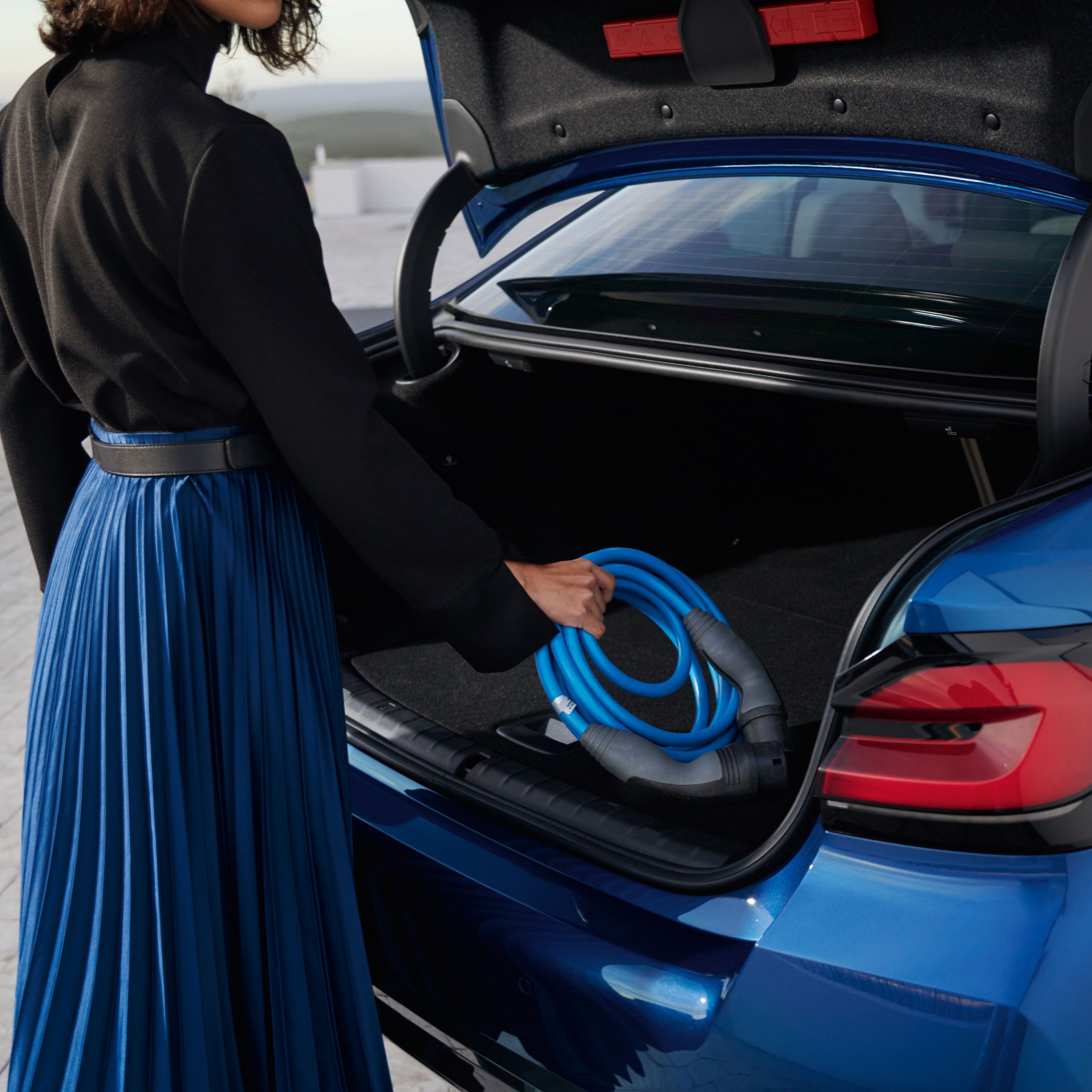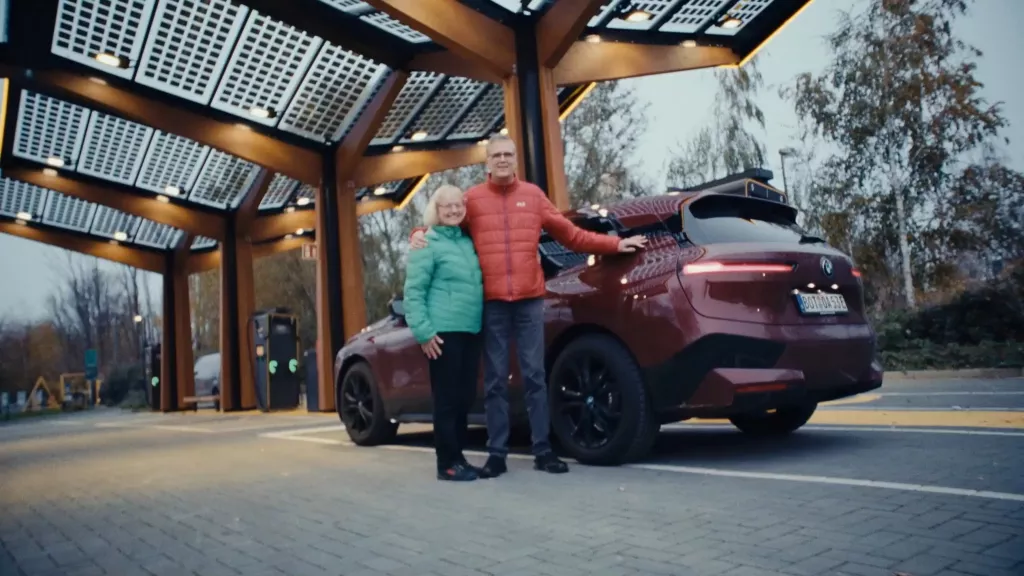BMW iX1 eDrive20: Energy consumption, combined WLTP in kWh/100 km[1]: 17.2–15.4; Electric range, WLTP in km[2]: 430–474
Charge with peace of mind: simply, any time and any place. Electric cars and plug-in hybrids herald a new kind of mobility that is both efficient and convenient. So now you can drive without a care every day and on longer trips, thanks to flexible charging options and innovative charging technologies. Either quickly on the go or conveniently at home. Find the charging solutions that best suit your lifestyle.
CHARGING SOLUTIONS FOR YOUR ELECTRIC CAR.
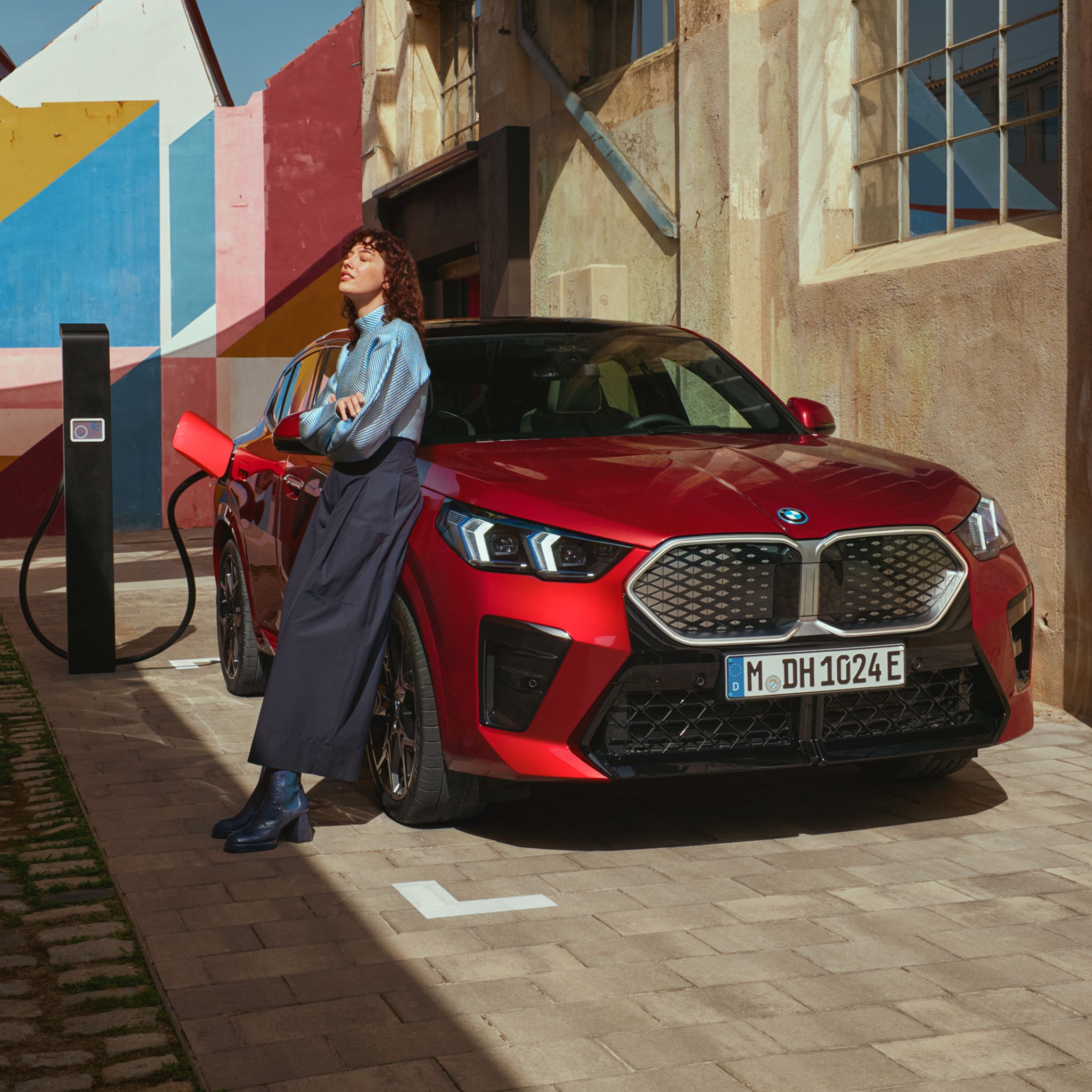
CHARGING ON THE GO.
Thanks to our extensive charging solutions, you'll also always find the right charging solution near you for your electric car or plug-in hybrid. In one of New Zealand largest charging networks, which is growing all the time. With up to 250+ public charging points at which you can conveniently charge your electric car.

CHARGING AT HOME.
No matter what, you'll charge your electric car or plug-in hybrid most conveniently and comfortably at home. Conveniently and at your chosen charging speed using a BMW Wallbox or the BMW Flexible Fast Charger at a high-power or domestic socket outlet. Find out more about the practical solutions that BMW offers to charge your electric car at home.
BMW CHARGING TECHNOLOGIES AND PRODUCTS.
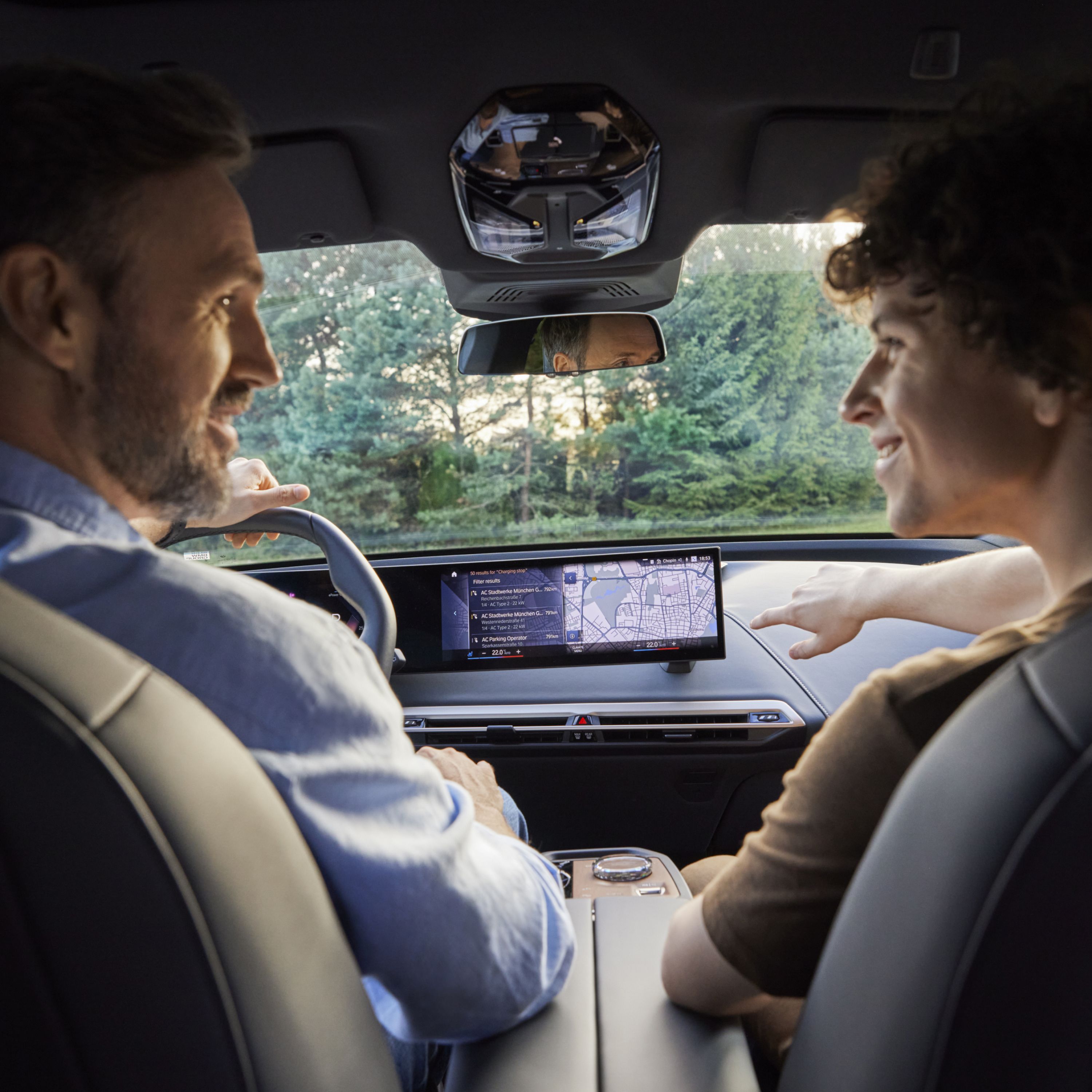
THE BMW ROUTE PLANNER DOES THE WORK FOR YOU.
With charge-optimised routes, you’ll arrive at your destination quickly and with peace of mind. Get in your car and select choose your destination as usual – the navigation does the rest. You’ll see the fastest route straight away, including the best possible charging stops along the way.
EVERY JOURNEY TAILORED TO YOUR INDIVIDUAL NEEDS.



Your car charges, you spend the time as you wish.
It’s entirely up to you which charging stops suit you best.
Because you decide what you’d like to do while the car is charging. Sip a coffee perhaps, enjoy a lovely view, or do some shopping? We provide all this information and more for various charging stations.
Individually tailored to you.
Do you prefer the charging points of a particular provider, where you can pay conveniently with BMW Charging or charge as quickly as possible? No problem! Filter your search entirely as you wish.
Always right up to date.
If your needs change, you can adapt your route planning quickly and easily at any time. The navigation will then calculate a new route. When your electric car is charged and ready, you’ll receive a push notification on your smartphone. You can enjoy this convenient service when you install the My BMW app.
Availability at the scheduled charging stations is checked continuously.

CHARGE-OPTIMISED ROUTES IN THE MY BMW APP – EVEN IF YOU DON’T HAVE A BMW.
Try it for yourself and find out just how pleasant and easy navigation with charge-optimised routes can be. With the demo version of the app, you can get a good idea of the features of the My BMW app even if you don’t own a BMW. Simply download the app, log on, and try it out.
PROBLEMS AND SOLUTIONS.

THE COST OF AN ELECTRIC CAR.
What does it cost to charge an electric car? Save money with lower service costs and lower taxes. Are there subsidies or incentives for electric cars? Find out if an electric car makes sense for you.
HOW MUCH ELECTRICITY AN ELECTRIC CAR NEEDS.
The power consumption of an electric car depends on various factors. The outside temperature and your own driving style – your average speed, for example – play a decisive role here. The costs involved depend on the consumption of the electric vehicle, the selected charging tariff, and the charging location. You also benefit from the BMW Charging extended charging network and attractive tariffs, such as the Active tariff with especially low fixed prices. For BMW customers with new vehicles, the first year is completely free with no standing charge.
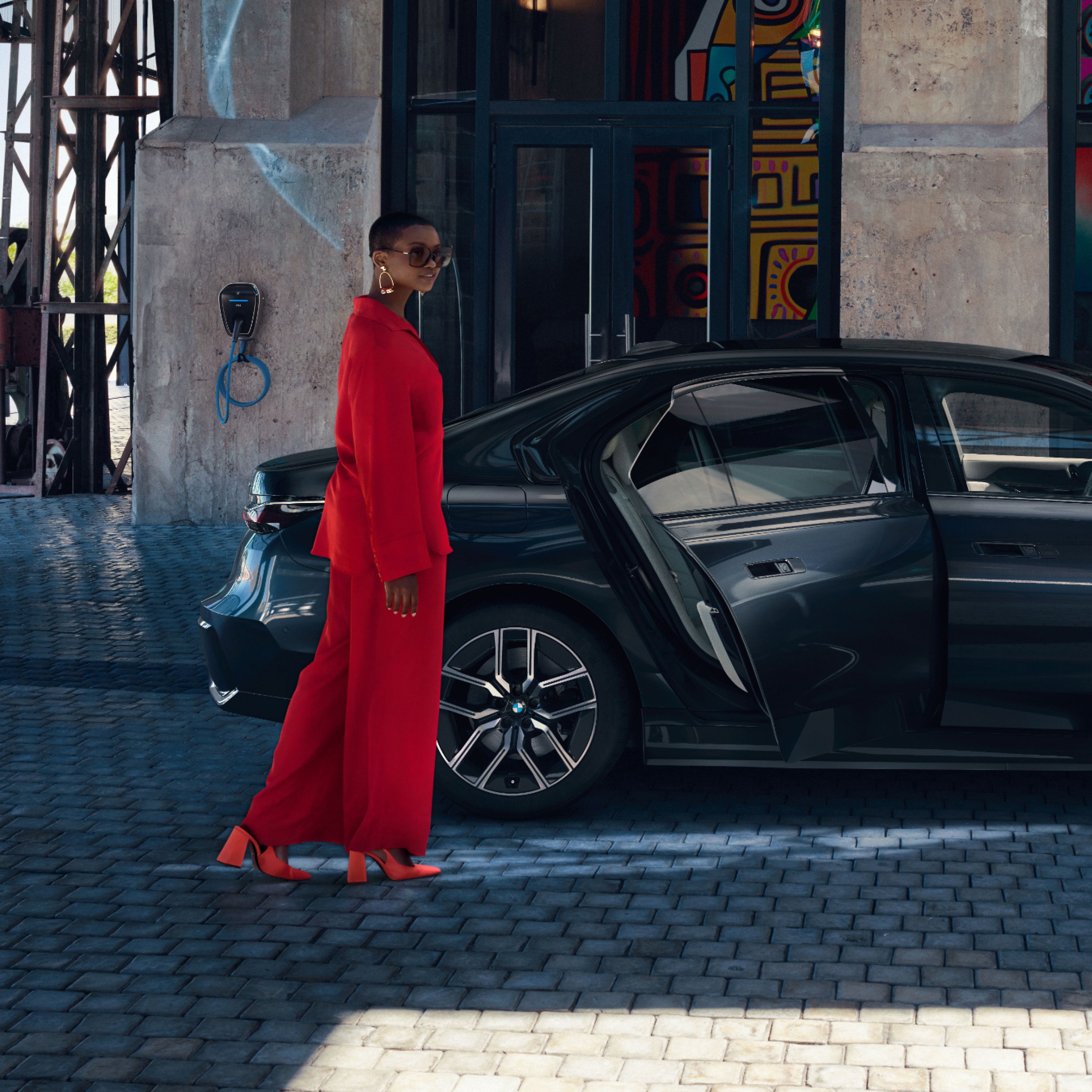
YOUR EXTENDED CHARGING NETWORK.
BMW Destination Charging aims to expand the charging options available to our customers. With a large number of charging points in New Zealand (125 destinations and growing). Conveniently make the most of these exclusive charging options at your destination, thanks to many participating premium partners, such as hotels, restaurants, golf clubs, etc. While you enjoy your stay, your BMW is being charged. Conveniently find your premium charging option using your navigation system or your My BMW app. Become part of a worldwide charging network on destinationcharging@bmw.com.
FOR CUSTOMERS BY CUSTOMERS: ELECTROMOBILITY IN EVERYDAY LIFE.
"We never regretted it."
Watch the video to learn how difficult longer journeys with an electric car used to be. And how conveniently and effortlessly BMW customers charge their electric vehicles today. Thanks to routes optimised for charging and additional functions that support you on your journey.




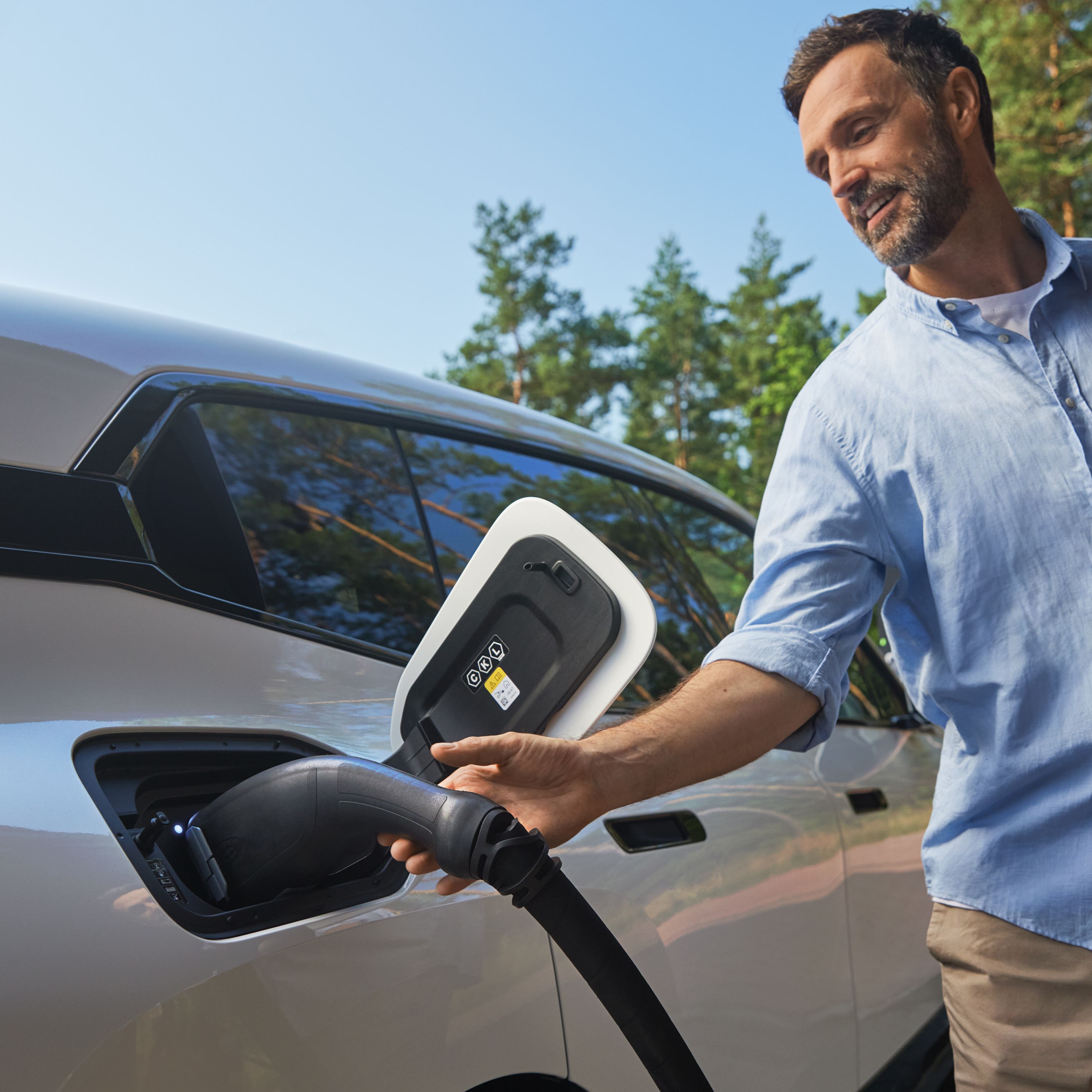
OPTIMISING THE LIFE OF YOUR ELECTRIC CAR BATTERY.
The service life of a high-voltage battery can be affected by your own usage habits. Your high-voltage battery should mainly be charged at a low charging power at AC charging stations or at a wallbox. For general use, it makes sense to run your car with a battery charge of between 10% and 80%. You can set a charging target of 80% for this. An efficient and anticipatory driving style also helps to increase the range of the battery and optimise its service life.

HOW TO POSITIVELY IMPACT THE SERVICE LIFE OF YOUR ELECTRIC CAR BATTERY.
Find out how the battery and electric motor of an electric car work. How you can positively influence the life of the high-voltage battery. And how quietly and powerfully an electric car accelerates and cleverly recovers energy when you brake.
FREQUENTLY ASKED QUESTIONS.
Fuel consumption and CO2 emissions.
BMW iX1 eDrive20: Energy consumption, combined WLTP in kWh/100 km[1]: 17.2–15.4; Electric range, WLTP in km[2]: 430–474
The values of fuel consumptions, CO2 emissions and energy consumptions shown were determined according to the European Regulation (EC) 715/2007 in the version applicable at the time of type approval. The figures refer to a vehicle with basic configuration in Germany and the range shown considers optional equipment and the different size of wheels and tires available on the selected model.
The CO2 efficiency specifications are determined according to Directive 1999/94/EC and the European Regulation in its current version applicable. The values shown are based on the fuel consumption, CO2 values and energy consumptions according to the NEDC cycle for the classification.
When charging times are shown they can be affected by a number of factors such as type of charger, voltage supplied to the charger/car and type of current (AC or DC) supplied to the charger/car. The car also plays a role in charging times as it can be set by the driver to accept various different amperage and should preconditioning be used to heat or cool the vehicle while charging this will also affect the charging time.
The basis for the calculation of the charging times for 100 km range is the electric consumption of the vehicle based on the use of a high-Powered Charging station (HPC) or charging type and current as indicted in the literature above. The testing procedure measures are based on a 23 degrees Celsius battery start and ambient temperature with certification values excluding additional auxiliary consuming devices and systems within the vehicle such as seat heating, displays, air conditioning.
Individual consumption (fuel economy) may differ due to driving profile, vehicle load profile, auxiliary consumer usage, temperature, and ambient conditions. Consumption is based on WLTP or NEDC (whichever is indicated) best case conditions and is independently tested for BMW Group. If you are comparing this range with other models or brands make sure they are stating the same WLTP or NEDC testing regime. These results can be used to compare vehicles on a close to “like for like” basis but are unlikely to be achieved in real world conditions for reasons including temperature variation, driving conditions and the use of the auxiliary systems referred to above.
Information provided and images displayed on this site include overseas models and may show some features not available in New Zealand. Please contact an authorised BMW dealer for specific information on vehicles and features available in New Zealand. Product changes may have been made since production of this content.
[1] Official data for fuel consumption, CO2 emissions, power consumption and electric range was determined in accordance with the prescribed measuring procedure and corresponds to European Regulation (EC) 715/2007 in the applicable version. For ranges, data determined as per WLTP takes into account any optional equipment (available on the German market in this case). For vehicles that have been newly type approved since 1 January 2021, only the official data according to WLTP exists. In addition, NEDC values are deleted from the certificates of conformity as of 1 January 2023 by EC regulation 2022/195. For more information about NEDC and WLTP measuring procedures visit www.bmw.com/wltp
Further information about fuel consumption and official model-specific CO2 emissions of new passenger cars can be found in the "Guideline for fuel consumption, CO2 emissions and electric power consumption for new passenger cars", available free of charge at all points of sale, at the Deutsche Automobil Treuhand GmbH (DAT), Hellmuth-Hirth-Str. 1, 73760 Ostfildern-Scharnhausen, Germany, and under https://www.dat.de/co2/.
[2] Range depends on various factors, in particular: individual driving style, route characteristics, outside temperature, heating/air conditioning, pre-conditioning.
[3] Performance data of petrol engines apply to vehicles using RON 98 fuel. Fuel consumption data apply to vehicles using reference fuels in accordance with EU Regulation 715/2007. Unleaded RON 91 and higher with a maximum ethanol content of 10% (E10) may also be used. BMW recommends RON 95 fuel. For high-performance automobiles, BMW recommends RON 98 fuel.
[4] For plug-in hybrid: Weighted, combined (EC AC Charge Weighted)
